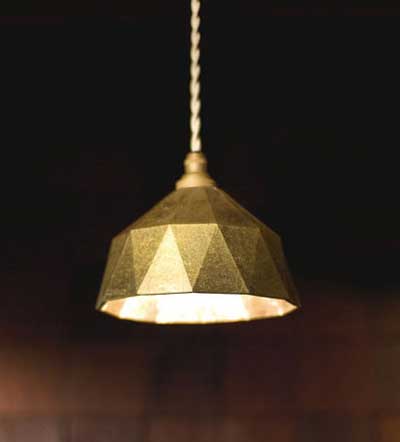
Myojo Pendants by Futagami x Masanori Oji

When Masanori Oji set out to attend a metal workshop taught by the president of Futagami, a unique collaboration was set into motion.
Oji is one of Japan’s most prominent young designers. Originally trained in architecture, his transition to product design found him working mostly with materials like paper, felt, and wood to create simple, award-winning designs he calls “Living Products”. Mr. Oji had wanted to design a brass bottle opener and saw the Futagami workshop as the perfect opportunity to learn about brass casting from one of the nations oldest metal ware manufacturers. Futagami has been hand making brass, bronze, and tin products for over a century in Toyama-Takaoka City.
Upon completion of the workshop, Masanori proposed to design a unique line of brass livingware for Futagami, who accepted graciously.
In 2009, Futagami released a series of celestial brass bottle openers and trivets designed by Masanori Oji. Iconic shapes of the Sun, the Milky Way, and the Crescent Moon, invoked both modern and antique flavors in polished and textured brass. The collection was a great success, winning an award from Interior Lifestyle in Tokyo that year.
(more…)
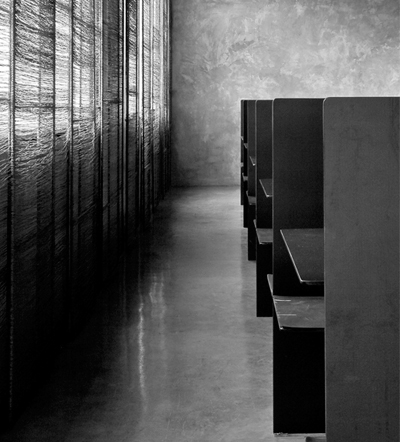
Photography courtesy of MSB estudi-taller d’arquitectura i disseny (Click images to enlarge)

Associations with “steel” might be “cold”, “hard”, and even the bitter mortal sound of the word “slab” — but Spanish architecture and design studio
MSB brings us something entirely different. MSB estudi-taller d’arquitectura i disseny (”MSB architecture and design workshop-office”) was established by architect Miquel Subiras in 2008. MSB’s 2010
ESSENCE collection of furniture is “made entirely in carbon steel, strictly selected for each piece, finished with varnish, preserving its unique materiality and personality”. The sleek, spare design shows the soul of steel to be that of a living, expressive, and even warm material.
MSB created
ESSENCE with the goal of exploring the essence of steel — the finish of the varnish coating each piece is selected to display the grain particular to it, as well as to allow the differentiation in shade and color that naturally occurs in steel over time to show through. The collection also takes advantage of steel’s extraordinary strength, as many of the designs form shelves and seating that have the potential to carry weights much heavier than their sleek, minimalist lines would suggest.
Of the collection, Subiras writes, “When you feel [steel's] density, you realize it is an earth’s son. When you see its expressive skin, you think about the influence time has had. When you know its possibilities, you discover a raw material with a richness of endless nuances, and surely you would have never thought its presence could provide so much warmth.”
(more…)
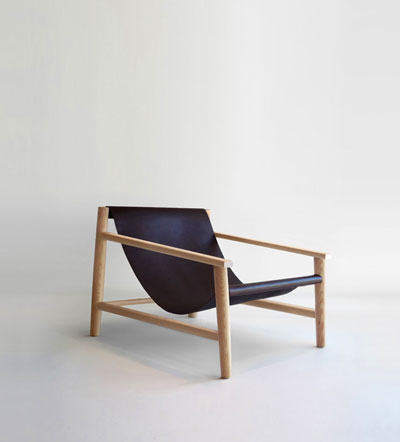

Over the last decade, New Zealand design has emerged on the worldwide stage. As a country that remains committed to the preservation of its pristine land, this ideology is often relayed in it’s design approach: modern simplicity combined with eco-conscientious, locally sourced materials.
Cameron Foggo is the latest designer to join the ranks with David Trubridge, Simon James, and Fearon Hay Architects — all locals who have made great contributions to the New Zealand design scene. Foggo’s furniture designs are understated gems that mix clean lines with traditional materials. Starling is a chair built with hand-turned white ash and New Zealand portage leather. The goal was to create a lounger with a simple skeletal frame that did not cause a visual partition and block the flow of a space. The Liaison Chair and Sofa have comfortable feather-filled cushions and can be custom built to any size. All of Foggo’s designs utilize components and materials made in New Zealand and are assembled on the South Island.
Foggo is the creative director at NoNN, a multidisciplinary design studio located in Christchurch. He is also working on a series of modular architectural homes and “bacshes” (small beach houses) that will launch in 2011.
(more…)
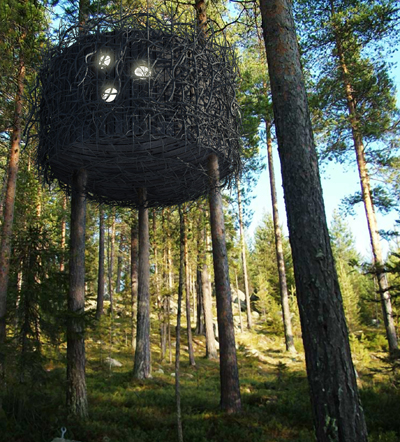
All photography courtesy of Treehotel. (Click images to enlarge)

It’s no secret that the hotel world and the design world have started to overlap more and more in the past several years, with ultra-stylized hotels cropping up in just about every major destination. Kent and Britta Lindvall have, shall we say, elevated the concept with their new
Treehotel, located 15.2 meters above the ground in the forest of Harads, Sweden. Perched in the trees and accessible by retractable ladders, the hotel has become both a coveted travel destination and something of an architectural marvel.
Treehotel currently has four rooms available (with plans for more in the coming months), including the Bird’s Nest, which looks and functions essentially exactly like it sounds. Perhaps the most eye-catching so far is the Mirrorcube, the brainchild of Tham & Videgård Architects (each room is designed by a different prestigious architecture firm). Constructed of aluminum and wood, the Mirrorcube’s reflective walls are designed to fit in with its surroundings and to essentially be invisible, with infrared film embedded to make it visible to birds, naturally.
Throughout the different cabins no eco-friendly detail has been spared, including incineration toilets. The Lindvall’s pet project is an equally enticing vacation spot for style mavens, ecotourists, and people that just really miss their childhood treehouse. As Britta
explains it, “Perhaps we’re a little crazy but it helps — if not, we would never have got started.”
(more…)

Masdar Development, city plan. Foster + Partners. 2007; expected completion 2018. Rendering: Foster + Partners. All images courtesy of Cooper Hewitt.
(Click images to enlarge)

The vibrant collection of objects on display now through January 10 at
Why Design Now?, the Cooper-Hewitt’s National Design Triennial, answers that question quite simply. Design matters because absolutely everything in our environment, from our eating utensils to the cities we live in, is designed, and the materials and methods with which they’re produced have a powerful impact on our culture and the environment.
Appropriately, the curators have included objects of every scale. The show includes drinking glasses with grip-like profiles to aid those with limited manual abilities, and renderings for Masdar, a new remote desert city in Abu Dhabi that will be the world’s first isolated, self-sustaining, zero-energy community.
The exhibit projects a curious ambivalence about technology. Some of the high-tech artifacts included, like the iPod, the Kindle, and twitter, have already become seemlessly embedded in our lives. They’re advanced, but commonplace. Other high-tech objects seem to belong to a distant, Jetsons-like future. There’s a giant, rotating dish-shaped solar collector with gleaming mirrored facets, and plans for a communal electric car system that would allow city-dwellers to borrow and deposit vehicles at designated stops.
(more…)
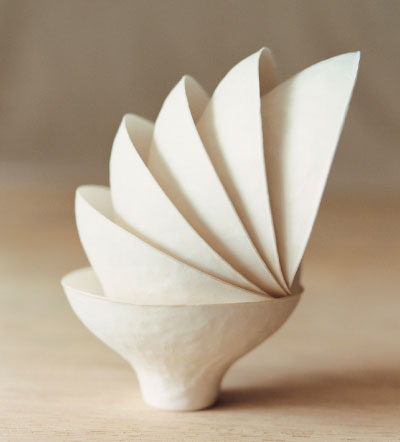
Images courtesy of branchhome.com (Click to Enlarge)

Sophistication and sustainability are not words commonly associated with disposable dishware. But the Japan-based company
Wasara has developed a product that takes the mind far away from the uninspired aesthetics of family barbecues and children’s birthday parties — not to mention, the nagging guilt over environmental waste — conjured up by your everyday paper plate.
Wasara’s collection achieves the critical goals of modern design with a product that offers style, function, and sustainability. The sleek, all-white pieces transform into veritable works of art when stacked on top of each other. The collection includes a variety of plates, bowls, cups, and mugs. The multiple forms accentuate each individual food item, emphasizing the significance of each part of a meal. The unusual curvature and soft, natural texture allow for the plates to rest comfortably in one’s hand, bringing an ease to socializing while enjoying a meal.
The collection’s noteworthiness, however, does not solely stem from its outward appearance. The dishware is made from reed pulp, bamboo, and bagasse — a byproduct of the sugarcane industry. Reed and bamboo are both quickly-regenerating natural resources; the manufacture of Wasara tableware thus avoids the ecological impact of traditional, wood-based paper manufacturing. Bagasse, which often is discarded, is recycled. The resulting tableware is completely biodegradeable. Once discarded, Wasara simply returns to nature.
(more…)
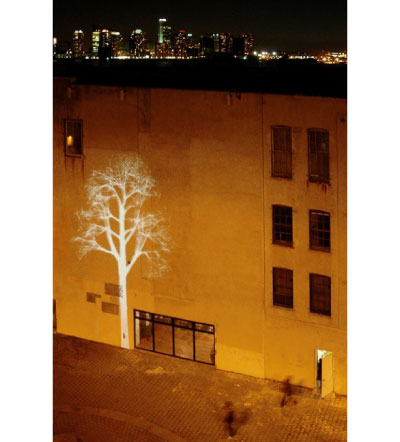
Tree: copyright Simon Heijdens and slowLab

Though the pithy proverb of The Tortoise and the Hare entered our collective cultural lexicon long ago, the increasingly rapid digital age has made it somewhat difficult to believe that slow and steady can triumph in any endeavor. For an organization like
slowLab, however, taking first place in any competition is merely tangential to a much broader goal. Dedicated to promoting slow design and the six principles it embodies — to reveal, expand, and evolve while encouraging viewers to reflect, engage, and participate — slowLab is the brainchild of director Carolyn Strauss. Founded in 2003, the slowLab prototype focused on slow dialogues, or public discussion forums that elaborated on the notion of “reflecting more, reacting less”.
Since then, the nonprofit organization has supported several projects that embody the ethos of slowLab’s defining principles. A “shining example” of slow design, according to Strauss, is former filmmaker Natalie Chanin’s lifestyle brand, Alabama Chanin. Instead of cycling through trends and seasons to turn a quick profit, Alabama Chanin challenges the fashion industry’s breakneck pace by producing sustainable, hand-stitched garments in Chanin’s hometown of Florence, Alabama. “I was initially drawn to her work because of how it honors and has revived local traditions,” says Strauss. Alabama Chanin’s products are all sewn by local women in traditional communication-fostering work circles, which in turn has also created jobs in a rural region.
(more…)

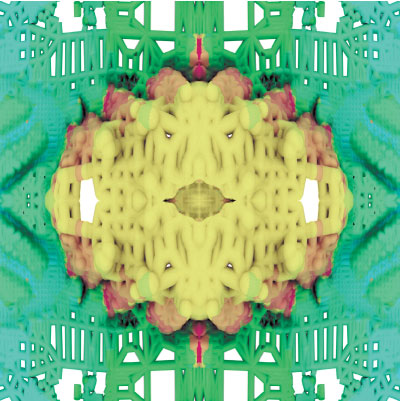
FAB.REcology by Neri Oxman, 2009 winner of The Earth Awards

The Earth Awards is an attempt to bring international public awareness to the necessity of sustainable design. An annual competition since 2007, the Earth Awards “came from a collective of creative thinkers who were designers, architects, scientists, writers, entrepreneurs”, says director Karena Albers. Collectively, the group was “in agreement that not only [are] good design and sustainable design synonymous, but also that … this movement of environmentalism was not moving ahead as quickly as we would have liked, and we believed it was because sustainable thinking wasn’t integrated into popular culture”.
The Earth Awards’ mission is to “find good design and then to connect the innovator with whatever that innovator needs to further his idea or her idea into the marketplace”, says Albers. Past winners have integrated biomimicry with building design, designed solar-powered LED lighting schemes, and created sustainable ways to farm ocean fish.
A particular strength of the Earth Awards lies in its selection committee. The Awards aim to bring in some of the most visible (and visionary) minds in the fields of art, architecture, design, environmentalism, activism and fashion. The eclectic group of judges ranges from Jane Goodall to Diane von Furstenberg to Paola Antonelli, the Senior Curator for Architecture and Design at MoMA.
(more…)
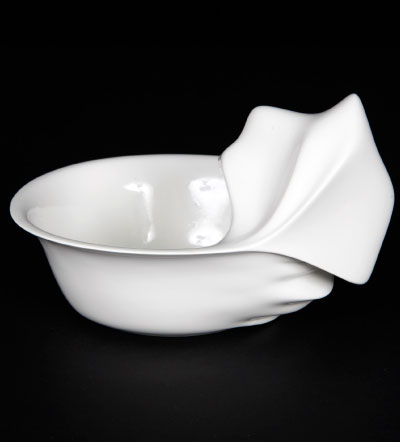
Photography and video courtesy of Geoffrey Mann

Geoffrey Mann of
Studio*Mrmann is an artist and designer who disintegrates the dividing line between art, craft, and design. His creations challenge our notions of the genres as he works to enlarge the gray area between them. Originally from and currently based in Edinburgh, UK, Mann received a postgraduate degree in Ceramics and Glass from the Royal College of Art, London after completing an undergraduate degree in 3D Design at Gray’s School of Art in Aberdeen. The integration of crafts, design, and multimedia demonstrated by Mann’s path as a student is also clear in his latest work,
Cross-fire — a unique project that seamlessly integrates a gorgeous work of animation with an unusual series of dishware and utensils.
Cross-fire animates a sound clip from American Beauty, the Oscar-winning film directed by Sam Mendes, in which the main character argues with his wife and daughter over the dinner table. In the clip, the voices of each character undulate through the plates, glasses, and utensils. As the emotions reach a crescendo, the waves of sound crash through the normally inanimate objects and deform “their once static existence into objects of unseen familiarity”, according to Mann’s description. Click through for the video.
(more…)
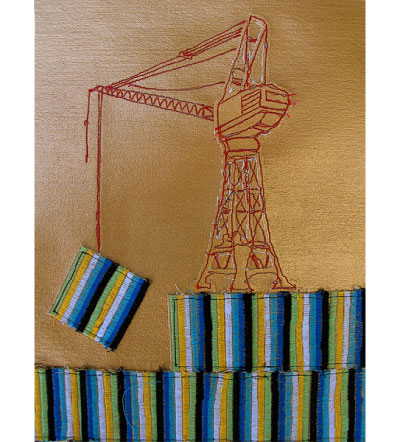
Courtesy of Steve MacDonald

Break out the old Singer, fiber art is back. Sewing meets its urban counterpart in San Francisco-based artist
Steve MacDonald, whose fervid creativity is made manifest in the unlikely medium of stitching and needlework. Even on a good day, embroidery and pop culture make strange bedfellows, but in the deft hands of MacDonald (aka Ramblin Worker) it just works. Combining typography, painting, and sewing with a bold and graphic aesthetic, each illustrative piece is like an eccentric home-ec project gone wonderfully awry. MacDonald cites folk art, fantasy, mythology, urban settings and Japanese nature scenes as just a few of his influences, making his own landscapes something of a limitless fantasy world. Obsessive attention to detail (did you notice all the different trajectories of stars in the sky?), tongue-in-cheek humor, and the strange recurrence of roaring tigers render the handmade intricacies all the more refreshing. More than ever in an increasingly digital age, where some fear nostalgic methods could be going the way of the dinosaur, or in MacDonald’s case, the way of the dragon.
The Last Dragon opens at the
Fuse Gallery in New York on April 24 and runs through May 15.
(more…)





 Facebook
Facebook Permalink
Permalink Digg
Digg Reddit
Reddit LinkedIn
LinkedIn StumbleUpon
StumbleUpon Tumblr
Tumblr












